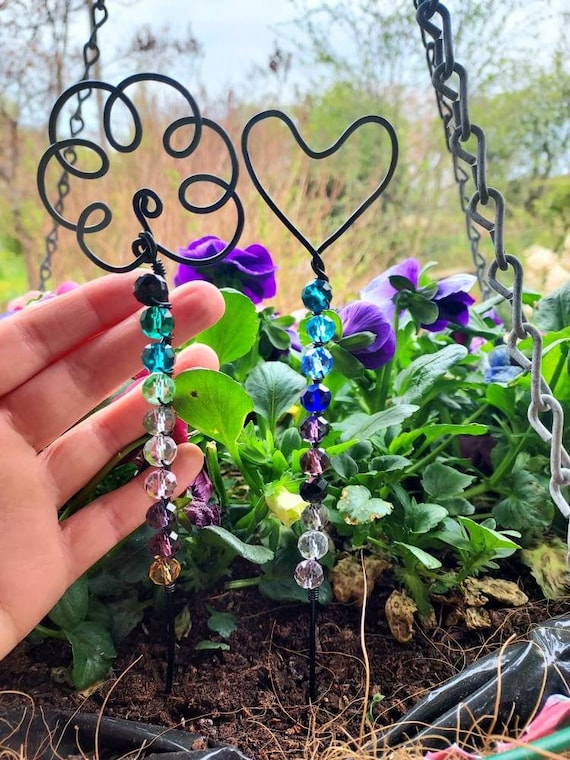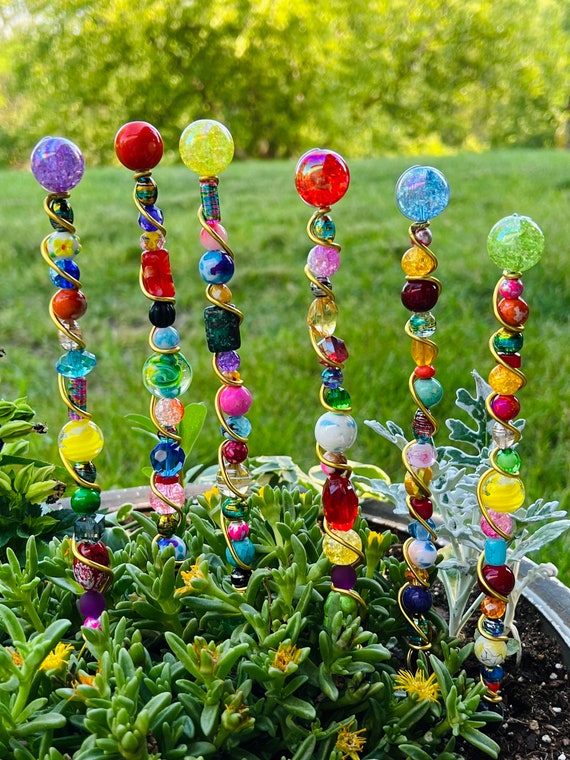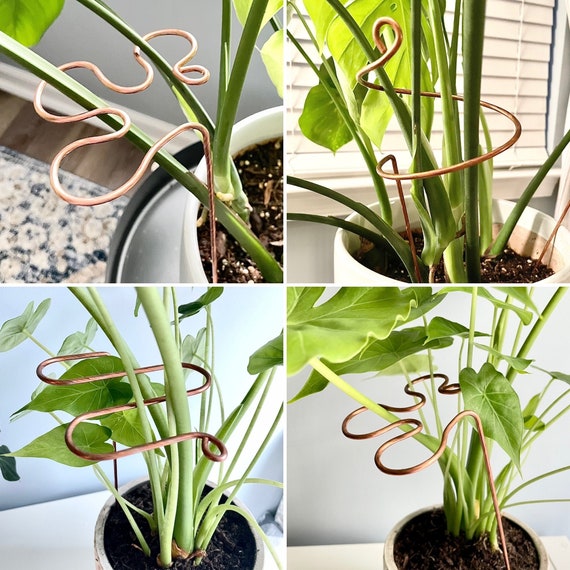Whether you’re a seasoned gardener or just starting out, decorative plant stakes can add a unique flair to your garden. Not only do they serve as functional support for your plants, but they also enhance the aesthetic appeal of your outdoor space. In this comprehensive guide, we’ll explore the various types of decorative plant stakes, their benefits, and how to choose the right ones for your garden.
Table of Contents
- What Are Decorative Plant Stakes?
- Benefits of Using Decorative Plant Stakes
- Types of Decorative Plant Stakes
- How to Choose the Right Decorative Plant Stakes
- Installation and Care for Plant Stakes
- Comparison Table of Popular Plant Stakes
- Personal Experience: My Journey with Decorative Plant Stakes
- FAQs about Decorative Plant Stakes
- Conclusion
What Are Decorative Plant Stakes?
Decorative plant stakes are decorative objects that provide support to growing plants while simultaneously enhancing the overall aesthetic of your garden. They come in various shapes, sizes, and materials, including metal, wood, and plastic. Beyond their utilitarian purpose, they can also showcase your personal style and creativity in gardening.
Understanding Their Purpose
Primarily, plant stakes are used to support plants that may not be able to stand upright on their own. This includes flowers with heavy blooms, climbing plants, or those that need a little extra help against wind and rain. However, decorative stakes add a visually appealing dimension that turns functional items into decorative garden art.
Benefits of Using Decorative Plant Stakes
Incorporating decorative plant stakes into your gardening routine comes with numerous advantages. Let’s dive into some key benefits:

1. Support for Plants
Providing sturdiness to your plants is the primary role of plant stakes. This is particularly crucial during heavy rain or windy conditions that might topple weaker plants.
2. Aesthetic Appeal
Decorative stakes come in various designs, adding charm and character to your garden. From whimsical designs to elegant motifs, they can complement your landscape beautifully.

3. Personal Expression
Choosing plant stakes allows you to express your personality and gardening style. Whether you prefer rustic, modern, or vintage-inspired designs, there is something for everyone.
4. Versatility
Decorative plant stakes can be used in various settings, from garden beds to potted plants on your porch. They are perfect for flower beds, vegetable patches, or indoor plants.

5. Garden Organization
Plant stakes can also help keep your plants organized. By staking them properly, you can maintain the desired spacing and arrangement, leading to a neater garden.
Types of Decorative Plant Stakes
Understanding the different types of decorative plant stakes will help you choose the best ones for your garden needs. Here are some popular options:

1. Metal Plant Stakes
Metal plant stakes are durable and can withstand harsh weather conditions. They are available in various designs, from simple rods to elaborate ornamental designs.
2. Wooden Plant Stakes
Wooden stakes offer a rustic feel. They blend perfectly with natural gardens but may require some maintenance against rot.

3. Plastic Plant Stakes
Lightweight and versatile, plastic stakes are often colorful and come in many shapes. They are perfect for children’s gardens or whimsical themes.
4. Decorative Garden Stakes
These stakes often feature fun designs such as animals, flowers, or garden signs, making them great as conversation starters while supporting your plants.

Comparison of Stake Materials
| Material | Durability | Aesthetic Appeal | Maintenance |
|---|---|---|---|
| Metal | High | Modern, Elegant | Low |
| Wood | Medium | Rustic | Medium |
| Plastic | Low | Colorful, Fun | Low |
| Decorative | Varies | Variable | Variable |
How to Choose the Right Decorative Plant Stakes
When selecting decorative plant stakes, consider several factors to ensure you make the best choice for your plants:
1. Assess Your Plant’s Needs
Evaluate the type of plants you have and their support requirements. Taller plants may need sturdier stakes than smaller ones.
2. Consider the Weight of the Bloom
Heavier blossoms will need stronger stakes to prevent bending or breaking, so choose materials based on the weight they will support.
3. Match Your Style
Your stakes should harmonize with your garden’s overall design. Whether you prefer whimsical, classic, or minimalist styles, make sure your stakes reflect that.
4. Weather Resistance
Consider the climate and weather conditions in your area. Some materials withstand weather better than others. For example, metals offer longevity against rust if treated.
5. Height and Size
The stakes should be proportional to your plants. Taller stakes for taller plants and shorter stakes for smaller varieties create a great visual balance.
Installation and Care for Plant Stakes
Proper installation and maintenance can make all the difference in enhancing your garden’s beauty. Here’s how:
1. Installation Steps
- Choose the right location near the plant that needs support.
- Insert the stake into the soil to a depth of at least one-third of its length for stability.
- Gently tie the plant to the stake using garden twine or plant clips, ensuring it is not too tight.
2. Maintenance Tips
- Regularly check the ties to ensure they are not constricting the plant’s growth.
- Inspect stakes for rust or rot, especially wooden varieties.
- Clean the stakes periodically to maintain their aesthetic appeal.
Comparison Table of Popular Plant Stakes
| Type | Material | Price Range | Best For |
|---|---|---|---|
| Standard Metal Stakes | Metal | $5 – $15 | Heavy Bloom Plants |
| Decorative Wooden Stakes | Wood | $10 – $25 | Rustic Gardens |
| Colorful Plastic Stakes | Plastic | $3 – $10 | Children’s Gardens |
| Artistic Garden Stakes | Mixed Materials | $20 – $50+ | Showcase Gardens |
Personal Experience: My Journey with Decorative Plant Stakes
When I first started gardening, I underestimated the impact of decorative plant stakes. Initially, I only focused on practicality, aiming for the cheapest and sturdiest options. However, after adding a few artistic stakes to my garden, I was amazed by the transformation they brought. Each time I stepped outside, I felt a wave of joy seeing not just healthy plants, but vibrant artworks that reflected my personality. My favorite is a whimsical butterfly stake that always brings a smile to my face, especially when it catches the sunlight!
FAQs about Decorative Plant Stakes
1. Are decorative plant stakes worth the investment?
Absolutely! Besides providing essential support, they add beauty and character to your garden, making them a worthwhile investment.
2. Can I use regular stakes for decorative purposes?
Yes, you can use regular stakes and paint or embellish them to fit your desired aesthetic. This is a great way to express creativity while saving money.
3. How do I safely secure my plants to stakes?
Use soft ties or plant clips to avoid damaging the stems. Ensure they are snug but not too tight to allow for growth.
4. What are the best materials for plant stakes?
It depends on your needs! Metal is great for durability, wood provides a rustic look, and plastic offers flexibility and fun colors.
5. How often should I check my plant stakes?
Regular checks are advisable, especially after heavy storms or wind. Monitor the condition of the stakes and the health of your plants.
Conclusion
Decorative plant stakes are a delightful addition to any garden, combining functionality with beauty. By selecting the right stakes and caring for them properly, you can enhance your garden’s aesthetic and provide the support your plants need to thrive. Remember, gardening is a personal journey, and each decorative stake is a reflection of your unique style and voice. Happy gardening!